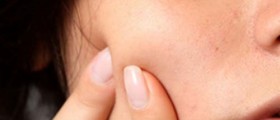
Introduction
A follicle is a skin formation which contains the different structures such as hair and sebaceous glands. Folliculitis is actually an inflammation of this skin formation.
Since folliculitis is an inflammatory process it can be caused by all the infective agents including bacteria, fungi, viruses and parasites.
Bacterial Folliculitis
The folliculitis in this case occurs as result of certain skin injury. The skin can be cut or scraped. Even after certain surgical incisions bacteria can enter the follicle leading to its inflammation. Still the infection does not have to be induced by the injury. In certain cases the hair can be stuck in the follicle and lead to consequent inflammation. This mostly affects women and happens after depilation. Even men whose facial hairs are too thick can have ingrown hair which leads to folliculitis. Bacterial folliculitis can affect only the surface or the process can spread onto the deeper layers. Impetigo is superficial folliculitis and furuncles and carbuncles are forms of folliculitis that has spread onto the deeper layers of the skin.
Staphylococcus aureus is the leading cause of bacterial folliculitis. Still some other bacteria can be the culprits of this skin condition. They include streptococcus, proteus and pseudomonas species. Even coliform bacteria can lead to infection.
Bacterial folliculitis need to be treated with proper antibiotics according to antibiogram.
Fungal Folliculitis
In certain cases folliculitis can be caused by fungi. Even fungal folliculitis can be classified as superficial and deep. The most common infective agents that lead to fungal folliculitis include pityrosporum and yeast species.
Dermatophytic folliculitis occurs in case that infective agents belong to species which primary affect animals. This folliculitis is rather serious and presents with pustules that are formed on the red and swollen skin. These fungi tend to penetrate into deeper layers and cause serious inflammation. In children the most common form of Dermatophytic folliculitis is tinea capitis. Patient loses hair at the spot of the infection. In neglected and rather extreme cases the disease can lead to forming of very painful marshy masses covered with pustules. This form may lead to permanent hair loss. The most common Dermatophytic folliculitis in older men is tinea barbae. In this case the beard is predilection place of the infection.
Viral Folliculitis
Viruses rarely lead to folliculitis. Still the most common viruses that can lead to this condition include herpes simplex virus. Molluscum contagiosum and herpes zoster are other possible causes of viral folliculitis.
Parasitic Folliculitis
In small number of patients certain parasites can lay eggs into the hair follicle and lead to folliculitis.

















Your thoughts on this
Loading...